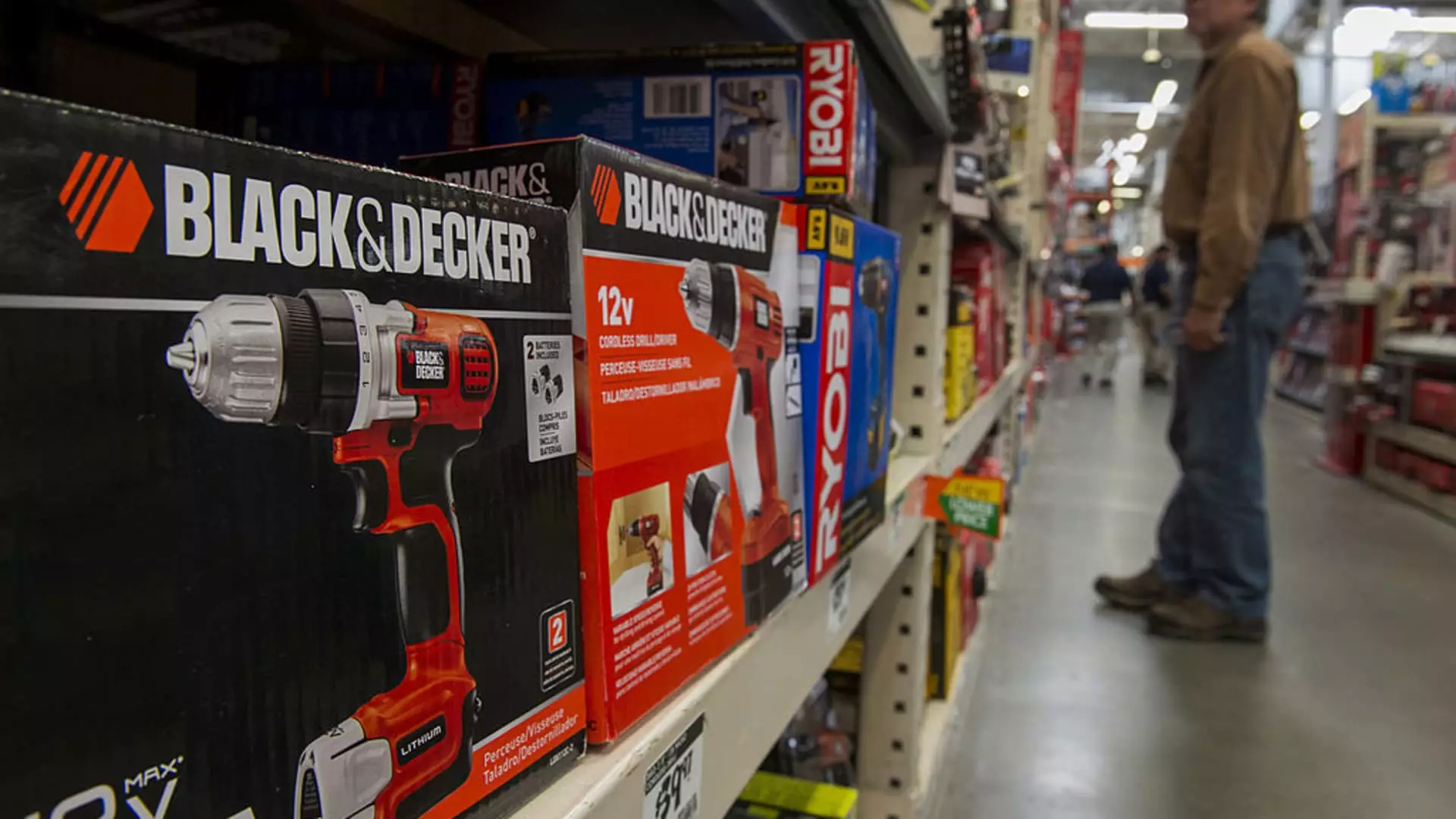On Tuesday, shares of Stanley Black & Decker experienced a significant decline, dropping nearly 12%, following the release of the company’s quarterly earnings report. This steep decrease has sparked discussions among analysts and investors alike, particularly those like Jim Cramer, who view the downturn as an overreaction. Rather than seeing the plunge as a signal to pull back, he suggests that this is an opportune moment for savvy investors to take a closer look at the stock.
The fact that the revenues fell short of Wall Street’s expectations is certainly a contributing factor to the stock price’s sharp decline. However, Cramer argues that the quarter wasn’t as disastrous as it may appear at first glance. His perspective urges investors to look beyond the immediate numbers and consider the broader context of the company’s performance. According to him, this quarter’s results should not be perceived as a fundamental failure of the business.
One of the key factors driving Stanley Black & Decker’s sales is the housing market. Cramer explains that potential customers are often reluctant to invest in tools—whether for professional use from brands like DeWalt or for DIY projects associated with Stanley Black & Decker—unless they feel confident in the appreciation of their living space. The hesitation among homeowners to commit to purchasing tools indicates a broader economic sentiment tied to household investment confidence.
This consumer cautiousness is not simply a reflection of the company’s performance; rather, it encompasses the whole economic landscape influenced by factors like housing values and interest rates. Cramer emphasizes that the current real estate climate is a significant obstacle that Stanley Black & Decker faces in achieving sales goals. However, once the market sentiment shifts, he envisions a rebound in demand for the company’s product lines.
Looking ahead, Cramer highlights an important external catalyst that could positively impact Stanley Black & Decker’s future: the U.S. Federal Reserve’s loosening monetary policies. As interest rates are lowered, borrowing becomes cheaper, which historically has led to an increase in housing activity. Increased homebuying not only boosts the construction market but also encourages homeowners to invest in their properties, thus elevating the demand for tools and equipment provided by Stanley Black & Decker.
While there are valid concerns regarding the bond market’s current performance and how it intersects with these economic predictions, Cramer remains optimistic. He insists that the prospect of a shift in the interest rate cycle could create significant opportunities for investors, positioning Stanley Black & Decker as a prime candidate for investment.
For investors involved with Jim Cramer’s perspective, the strategy is clear: capitalize on market overreactions. The current dip in Stanley Black & Decker stock provides an entry point that Cramer believes is worth considering. He encourages a proactive approach to investing, urging potential shareholders not to neglect the long-term view amidst short-term volatility.
While the recent earnings report and stock movement may seem daunting, Cramer’s insights suggest that the company’s underlying fundamentals and potential future growth avenues are strong. As the market adjusts and consumer confidence returns, those who invest wisely may find themselves well-positioned to benefit from future gains in the stock’s performance.

